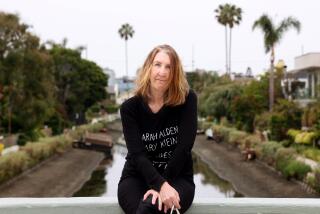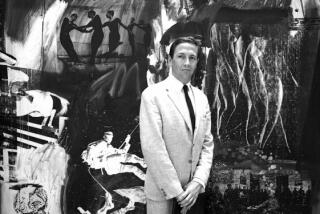In defense of Abbot Kinney
- Share via
SUSAN Salter Reynolds’ characterization of Venice founder Abbot Kinney as “equal parts shyster and urban visionary” [“Fall’s Hush Breaks Over Venice” Oct. 27] is only half-true. No question about it, Kinney was a dreamer and a doer. His wide-ranging accomplishments as an entrepreneurial innovator, pioneering environmentalist, public-spirited philanthropist, as well as being an early entertainment industry mogul, certify him for inclusion in that mythic pantheon of great Americans.
By the time Kinney arrived in Southern California in January 1880, the 29-year-old had traveled the world twice, learned five languages and become a tobacco tycoon.
For the next 40 years, he played a leading role in making Santa Monica Bay’s nascent amusement business an international tourist destination.
The late Glenn S. Dumke, chancellor of California State College (now university) system from 1962 to 1982, in his classic study of Southern California’s land boom of the 1880s, separated Kinney from all the other land developers and glowingly characterized him as a “universal man.”
And for good reason, as this partial list of Kinney’s achievements included: Sierra Madre horticulturist, Mission Indian activist, railway financier, author, newspaper publisher, a member of Yosemite Park Commission, early advocate of public libraries, and president of the Southern California Academy of Scientists.
To celebrate the 20th century, the ever-energetic Kinney created “Venice of America,” a spectacular entertainment resort development, which evolved into the city of Venice -- the first municipality mandated to assist citizens in their “pursuit of happiness.”
Just because some of Kinney’s plans didn’t turn out perfectly, he shouldn’t be labeled a “shyster.”
WILLIAM MCNALLY
Venice
More to Read
Sign up for The Wild
We’ll help you find the best places to hike, bike and run, as well as the perfect silent spots for meditation and yoga.
You may occasionally receive promotional content from the Los Angeles Times.






